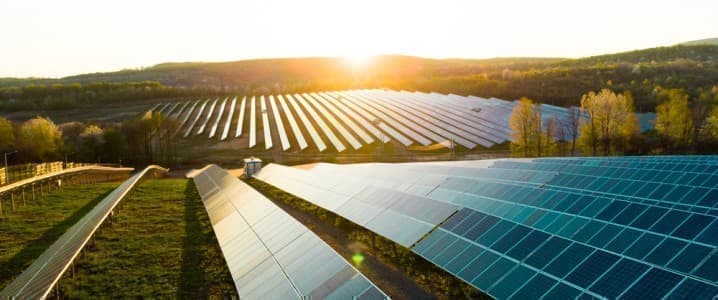A solar energy boom is reshaping the United States’ energy transition. Solar still only accounts for 6% of the United States energy mix, but it’s already disrupting energy markets in major ways. The rapid rise of this variable energy form has also instigated a rapid rise in energy storage batteries and is forcing grids to become more flexible, acting as a catalyst for wide-sacel energy systems transformation in the United States.
Although photovoltaic energy technology still represents just a small share of overall national energy output, solar energy production capacity has grown explosively in recent years thanks to significant policy support and government incentives including Obama-era investment tax credits and the Biden administration’s Inflation Reduction Act. “Beyond these federal incentives that allow energy developers to claim tax credits equivalent to 30 percent of the installation cost of renewables, state policies that proactively drive clean energy or promote a competitive market in which the dwindling price of renewables allow them to outshine fossil fuels have been critical to ratcheting up growth,” a recent Grist report stated.
The growth has been considerable. From 2018 to 2023, solar energy output skyrocketed by 155% according to figures from the U.S. Energy Information Administration (EIA). Over the same period, the United States cut back its coal usage by a whopping 41%. The result is a much cleaner energy landscape. But it’s also a more volatile one.
Solar energy is variable, meaning that its production varies according to factors outside of human control, unlike fossil fuels which can be burned in any quantity necessary at any time to match demand. And unfortunately, peak daily production hours for solar panels tend to coincide with the lowest energy demand hours. As a result, utilities that already have considerable solar assets often briefly have to sell that energy at a loss when supply is highest and demand is lowest. In some places, like California, there has simply been too much solar buildout, too soon.
But there are some benefits to the solar flood. This dynamic has spurred significant investment into energy storage so that surplus solar energy can be stored and then fed back into the grid when it is needed. The EIA expects nationwide battery storage capacity to almost double over the course of this year with an additional 14.3 GW of battery storage expected to come online in 2024 for a grand total of 39.8 GW. That’s compared to just 6.4 GW of new battery storage capacity that came online in 2023, which already represented a 70% annual increase. That’s how fast the sector is moving – but it will need to move even faster to keep pace with the buildout to meet decarbonization goals without compromising national energy security.
And according to some experts, this forced growth is great news for the country. It’s setting us up for success in what will be a frequently difficult and rocky transition away from fossil fuels. As a recent op-ed from Reuters stated, with widespread energy storage as well as “wider use of smart energy meters - which encourage consumers to increase power consumption when supplies are most abundant - all U.S. utilities are learning key ways to accommodate rapid growth in solar output and set themselves up for further energy transition progress.”
While this is a promising foundation for stable future growth, it’s not nearly enough. Both solar energy production capacity and renewable energy storage will have to continue their steep growth trajectory in coming years if the United States is to have any hope of a) making good on its own decarbonization pledges, and b) become competitive in global solar markets. While years of a supportive political climate has been great for the homegrown solar sector, it’s going to take a lot more for the United States to come anywhere close to competing with China.
By Haley Zaremba for Oilprice.com
More Top Reads From Oilprice.com:
- Black Sea Port Becomes Geopolitical Battleground
- Surge in Demand Drives Up Shipping Costs for U.S. Importers
- Nigeria Looks to Lithium as Its Oil Industry Struggles


















